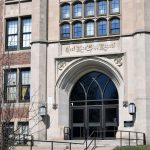Thoughts on Milwaukee University Crime
Public perception of Milwaukee’s university campuses is that they’re a step shy of being a war zone at night. Unfortunately for fear mongers everywhere, they’re not. The latest shooting on the UWM campus has again brought about discussion about how dangerous Milwaukee’s urban college campuses are compared to the rest of the state. Milwaukee undeniably has more crime than other cities in the state, however, it does not have to be that way.
What’s going on that creates random robberies on Milwaukee’s campuses?
The issue is two-fold. First, Milwaukee has a crisis level of unemployment when it comes to African-American males. This has the trickle down effect of creating a central city that has a crime problem. It’s hard for unemployed parents to be good parents. It’s also hard for those people to be good neighbors and members of society. It’s certainly not solely an African-American issue, as the issue affects everyone. It’s also not just a Milwaukee issue, it’s a Wisconsin and nationwide problem. Those without jobs are trapped within inner cities as they are even more rejected as members of society in smaller towns. It’s an issue that starts with one group of people and spills over to affect everyone. The Fourth Street Forum from two weeks ago touched on this. No one has a good solution to end it currently other than to end racism, which despite being the 21st century seems to be easier said than done for a large part of America.
So you need to understand that there is a structural problem that creates this mob of teens with a lack of true role models and a feeling that they’re trapped in a never ending situation. They instead turn to crime and prey on those that are the weakest, unsuspecting college students.
How do we fight this problem? First off, it’s crucial to acknowledge that it is not one problem of schools in Milwaukee being unsafe. It is two separate problems that cross paths. The first problem is crime caused by unemployment, which I won’t go into anymore in this article. The second problem is to help students to be protected against predators.
The second problem has been traditionally counteracted by the placement of security points around campus where students can push a button to call for help and the increased presence of police patrols. Both are band-aids for bullet wounds, which as of Monday night became a bit too literal of analogy for one student. These stop-gap measures are ineffective for helping students when a robber assaults them with a gun on the sidewalk. As I found out the hard way with a shotgun barrel to my head this summer, you can’t ask a robber to stop so you can call 911 or run for help.
The important thing is that future development must encourage students not to drive, but to walk everywhere. Safety will only emerge from increasing the number of pedestrians on the street at night, not the number of police offers. Linking these emerging pedestrian neighborhoods by light-rail systems or properly marketed bus systems will further increase their development and safety.
Big cities and their respective university campuses do not create crime and can in fact prevent it and improve their residents quality of life by creating dense neighborhoods that rely on pedestrian transit.
Milwaukee’s campuses are not dangerous and you should feel safe walking on them. Students need to remember that if they’re walking alone at night to stay on well trafficked streets and to help their fellow peers by choosing to walk to other destinations in the area. Every time someone chooses to walk on campus at night they are helping make the campus safer by decreasing the chance a predator will find a lone student walking at night.
As former Milwaukee mayor John Norquist advocates in his book, the Wealth of Cities, the safest city streets are the ones with the most walkers at all times of the day. Let’s help Milwaukee become a safer place for people to live, work, and play.





















